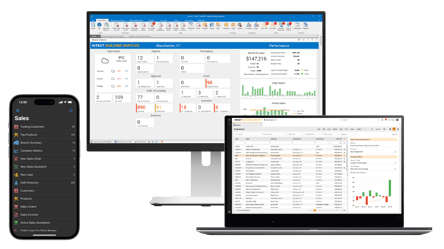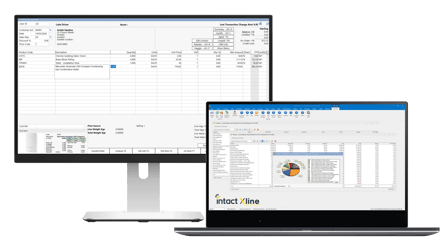Online marketplaces have boomed in recent years, with research suggesting that 51% of web consumers buy from such platforms every week – that represents a huge proportion of all revenue generated online. So, whether you’re a B2C or B2B business, you should be asking yourself if you can afford not to get set up on relevant online markets.
“What exactly is an online marketplace?” we hear you ask. Put simply, it’s an e-commerce website where you can host your products and services; think Amazon or eBay. The great thing about these types of sites is that they generate lots of traffic, so you can reach more transactional customers and drive sales for specific products.
Sounds like a no-brainer, right? Certainly, establishing a presence on online marketplaces can be of huge commercial benefit, but there’s one hurdle you’ll need to overcome first –finding the right platforms to suit your business, budget, and requirements.
Choosing an online marketplace through which to sell goods is no easy feat. With dozens of well-established and up-and-coming sites out there, all offering their own USPs, landing on the one that’s right for you can be challenging.
To help, we’ve put together this guide on how to choose the right online marketplace for your business, looking at the pros, cons and key considerations when choosing between some of the UK’s best-established online marketplaces.

Amazon
Where better to start than the world’s foremost online marketplace: Amazon. Established in 1995, Amazon has led the way in web market innovation, and now hosts millions of unique sellers across its global operations.
Find out if Amazon is the right fit for you below.
The Three Main Benefits of Selling on Amazon
- Guaranteed traffic – As you might expect, Amazon generates eye-popping traffic volumes, with more customers using its service than any other. This means minimal legwork drumming up potential custom, and maximum possibility of making a sale.
- Low marketing costs – Following on from our last point, guaranteed traffic means you can start selling on Amazon with virtually no marketing, which is ideal for keeping costs under control. Of course, competition is high, so we’d recommend optimising your listings with compelling descriptions and imagery to attract potential buyers.
- Hands-free logistics – Opt for an FBA (Fulfilment by Amazon) plan on sign-up, and you can simply ship your products to Amazon, and they’ll take care of the rest. This includes storage, packing and shipping, for streamlined and cost-effective logistics.
The Biggest Disadvantages of Selling on Amazon
- High competition – Competition is fierce on Amazon, so while the site’s huge visitor numbers mean plenty of traffic, there are no guarantees when it comes to sales.
- High commission – It’s no surprise that Amazon charges a premium to sellers hoping to take advantage of its powerful sales platform. We’ll cover the real-world costs you can expect below, but suffice to say it doesn’t come cheap.
- Stringent data requirements – Amazon prides itself on its accurate product information, and requires all merchants to log regular updates through Amazon-API. This can be a steep learning curve for the uninitiated, though there are several third-party tools and applications to simplify the process.
How Much Does It Cost to Sell on Amazon?
Amazon offers two plans to merchants looking to sell through its marketplace, including:
- Individual – Here, you’ll pay 75p every time you sell an item, as well as additional fees for FBA services.
- Professional – The Professional plan costs £25 per month with no individual selling fees. You will pay more for FBA services, though.
Find out more about selling on Amazon here.

eBay
Like Amazon, eBay has been around long enough to have perfected its marketplace offering. Appealing to both mainstream consumers and those looking for special-interest items, its unique ‘auction’, ‘offer’ and ‘buy it now’ transaction options make it a popular choice for all kinds of merchants. See if it’s right for you below.
The Benefits of Selling on eBay
- Unique transaction options – eBay’s ‘auction’ and ‘buy it now’ features mean you have scope to tailor your transactions for specific products. For example, auctions can work well for higher-cost items, giving you the opportunity to make more than you perhaps would have. They’re also attractive for buyers.
- Lower fees than Amazon – While eBay is by no means cheap, it is a fraction more affordable than Amazon. So, for every item you sell, you’ll pay less in fees – which is good news if you sell a high volume of products or lots of high-cost, high-commission items.
- Incredible traffic and coverage – While eBay can’t match Amazon on traffic volume, it’s no slouch. Indeed, the site has over 180 million active users across almost every country on Earth, meaning limitless traffic and plenty of opportunities to bag a sale.
The Disadvantages of Selling on eBay
- Competitive – As with Amazon, eBay merchants face stiff competition. And because it’s a global marketplace, there’s always the risk of being outpriced by vendors in other countries, who may be able to offer the same or similar products at a discounted rate.
- Review system can be damaging – eBay’s unique merchant and buyer review system can be tricky to manage, with any negative reviews having a direct impact on the likelihood of making future sales.
- eBay SEO – eBay works on a keyword structure, which is both a good and bad thing. One of the downsides to this is that it can be hard for customers to find your products if they’re not already supported by optimised search terms.
How Much Does It Cost to Sell on eBay?
eBay has a range of different subscription models for eBay Shop members, ranging in monthly cost from £25-£399 depending on your requirements and budget. You can learn more about how much it costs to sell on eBay here.
ASOS Marketplace
ASOS is one of the UK’s leading e-fashion marketplaces, with an average of over 60 million visits each year. In 2010, the brand launched its first dedicated marketplace, giving third-party fashion brands the opportunity to sell their wares on ASOS’s powerful e-commerce platform for the first time.
Is your business in the fashion, homeware, or lifestyle sector? Find out if selling through ASOS Marketplace could be a good option for you below.
The Benefits of Selling on ASOS Marketplace
- Attractive for eco-conscious buyers – As the world continues to count the cost of fast fashion, more people than ever are turning to vintage and second-hand clothes as an alternative – and that’s good news for ASOS Marketplace merchants. Many of the vendors within this market space offer second-hand or pre-owned items, and those that don’t can benefit from increased traffic to the portal.
- Personal account manager – When you become an ASOS Marketplace seller, you’ll have instant access to a personal account manager, who’s there to help you maximise sales and grow your store within the platform.
- Customisable storefront – ASOS Marketplace makes it easy to customise your seller portal, so you can retain your brand identity – an area some marketplaces fall short in.
The Disadvantages of Selling on ASOS Marketplace
- Application process – Unlike other marketplaces, getting started on ASOS isn’t simply a case of paying subscription fees. First, you need to apply and have your business approved to appear on the site, which can take a week or two. Though this can be a tricky stage to negotiate, it does mean the marketplace is exclusive and fair for all.
- Costs – Selling on ASOS Marketplace can be quite expensive, with a monthly subscription and commission charged on every item you sell.
- Limited transaction options – All ASOS Marketplace transactions are handled by either PayPal or Stripe. While your account manager can help set these up for you, it could be restrictive and there may be more fees involved.
How Much Does It Cost to Sell on ASOS Marketplace?
ASOS charge a £20 per month subscription fee to all Marketplace vendors, as well as a 20% commission for all items sold. Find out more about selling on ASOS Marketplace.

ManoMano
Originating in Europe, ManoMano is a relatively new marketplace that specialises in home improvement, DIY, and gardening supplies. It works with a growing list of over 3,600 merchants, with an emphasis on mid-range products from vendors that meet their stringent quality and reliability standards.
In the DIY or homeware sector? Find out why ManoMano could be the ideal marketplace match for your brand.
The Advantages of Selling on ManoMano
- Over 7 million active users – ManoMano has grown considerably in the last few years, with the latest figures showing that the site has over 7 million active users – more than enough to encourage sales and engagement.
- Option to expand – UK sellers can expand into new overseas markets as they grow their ManoMano store, with growth dependent on a good customer service and sales record.
- Fair pricing – It’s unlikely that you’ll ever feel outpriced on ManoMano. That’s because it vets merchant product pricing, comparing it to its own direct-to-consumer site. So, competition is fair, and pricing is consistent for end users.
The Disadvantages of Selling on ManoMano
- Other marketplaces offer a comparable service – ManoMano isn’t offering anything particularly new or innovative, and there is steep competition from the likes of Wayfair, Etsy and indeed Amazon.
- No help centre or tutorials – If you’re not familiar with operating a marketplace store, ManoMano may prove a steep learning curve, with no formal tutorials or help centre to help you out. That said, there should be plenty of advice on third-party sites on how to get started on the platform.
- All fulfilment carried out by sellers – Logistics are all on you when selling through ManoMano, which may not be a bad thing depending on your existing infrastructure and supply chain.
How Much Does It Cost to Sell on ManoMano?
The great thing about ManoMano is that it’s relatively cheap compared to other DIY and homeware marketplaces. Merchants don’t pay any commission or fees for sales, instead paying a flat rate of $35 per month for the subscription fee. Learn more here.

Etsy
Easily one of the world’s most recognisable names in home and giftware, Etsy ranks among the web’s leading marketplaces, attracting billions of hits each year. If you sell unique items, giftware or home accessories, an Etsy shop could help you reach a whole new raft of customers. Find out more below.
The Benefits of Selling on Etsy
- Niche products for niche markets – If your business specialises in products with a unique edge, Etsy could help get your brand in front of the right customers. Most visitors to the marketplace are looking for unique items that you can’t find just anywhere, and that’s what makes it such a distinct platform.
- The Etsy Seller Community – Unlike other marketplaces, Etsy doesn’t encourage competition in the name of price hikes and commercial dominance. Instead, it offers a forum where sellers can collaborate and share with their fellow merchants, making it one of the friendliest marketplaces on the web.
- Simplicity – Ease of use is an important factor for many businesses looking to set up a marketplace shop. Happily, Etsy is one of the simplest platforms around, with user-friendly interfaces that make it easy to create new product listings and access sales data.
The Disadvantages of Selling on Etsy
- Niche product criteria – Etsy is only open to merchants selling handmade, vintage or craft items, so many businesses may not be able to trade.
- The market is approaching saturation – Etsy hosts a staggering 4.4 million sellers and counting. That means you’ll be competing with lots of other brands selling very similar items – no matter how unique your products are.
- Charges and fees – Etsy has lots of different fees and charges to be aware of as a seller, and no clear-cut subscription model. Be sure to read the small print carefully to calculate how much each sale will cost you.
How Much Does It Cost to Sell on Etsy?
Etsy charges $0.20 for every item you list, followed by a 5% transaction fee. There are other fees to consider too, which you can learn more about here.
We hope you’ve enjoyed this guide to five of the UK’s best-known online marketplaces and how much it costs to sell with them. There are dozens of similar platforms out there, but this should give you a general idea of the things to look out for.
Whether you’re looking to invest in ERP or have recently started selling through an online marketplace, at Intact, our innovative software solutions can help your business grow. For more information, visit the homepage or contact our expert team today





